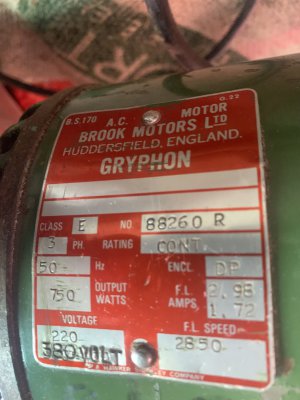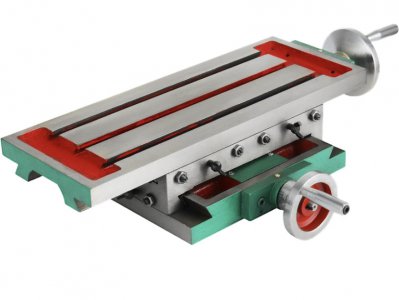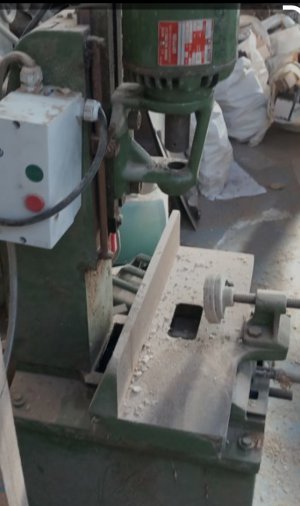My belief about the mortising machine (reflected in the comments already above) is that while it's probably more rigid than a drill press, it's still not anywhere suitable for use as a milling machine. That's speculation on my part, based on having limited use of that type of machine, in a range wood from very, very soft wood to very, very hard wood. Never tried to make a mill out of one, but my gut says it doesn't have what it takes.
That Vevor Milling Table..... Garbage. It's not going to do what you want. They're pretty great for spotting holes on a drill press, visually, with punch marks and all, but they're not tight, not accurate, the leadscrews are inconsistent enough to make the dials useless.... They're pricepoint junk. A casting kit for you to finish yourself at best, but in practice there's not a lot of room to work with there. I'd give you mine, but it broke, on the drill press, when an inch and a quarter, maybe inch and a half? (32? 38?mm hole saw started chattering making a hole in a piece of quarter inch flat bar (6.some mm). A huge chunk of "way" broke right out. They're NOT milling machine material.
I've done things in my life just to see if I could, knowing full well that there was no possible way it was going to work. Just for the satisfaction of having tried. Just for the sport of chasing that one project in dozens that works out, against the advice of others who already knew what I didn't. If you do this anyhow, I'll follow along, offer any advice I can, and hope for the best possible outcome. I do believe however, that you're going to be money, time, and results ahead by holding out for the real thing. Real milling machines get a LOT cheaper if they are a project, and would, I believe, in my opinion, be a lot better investment of time, effort, and resourcefulness.









